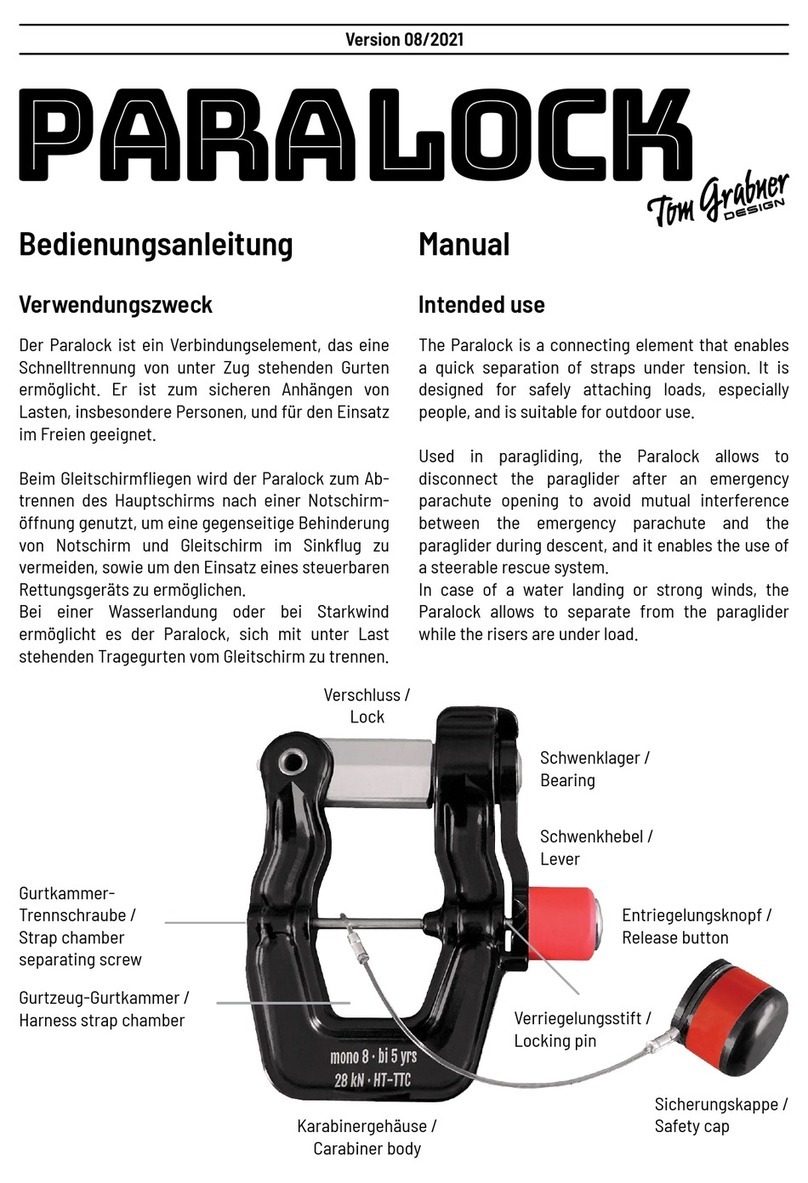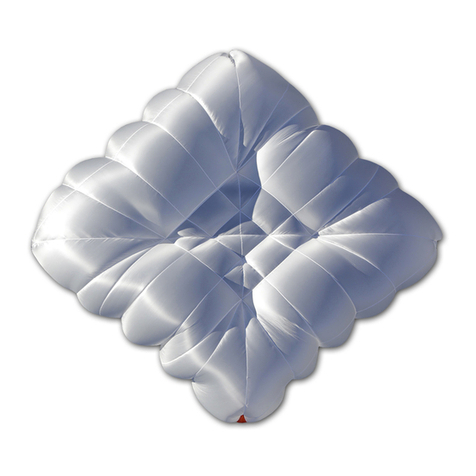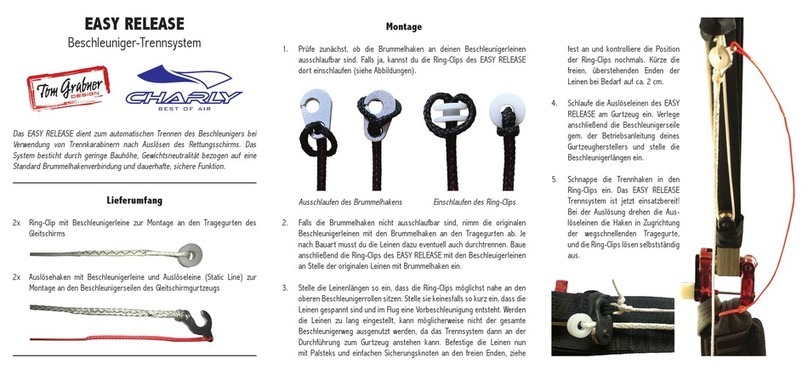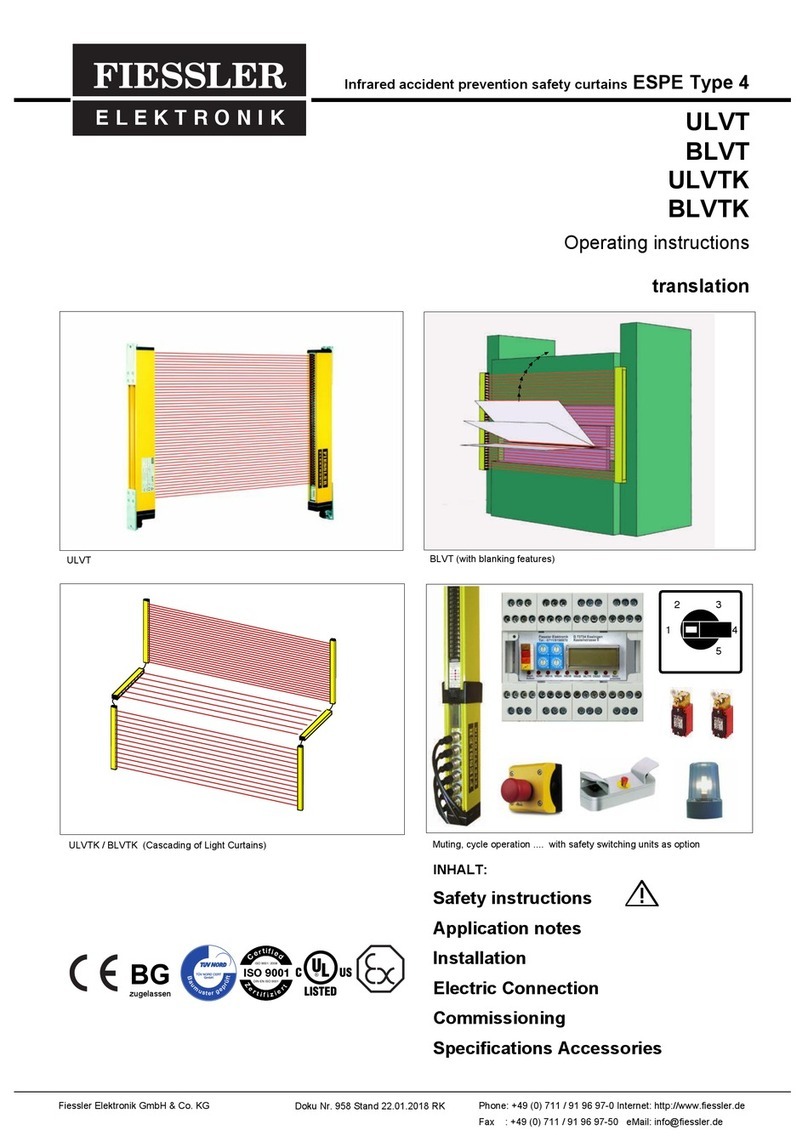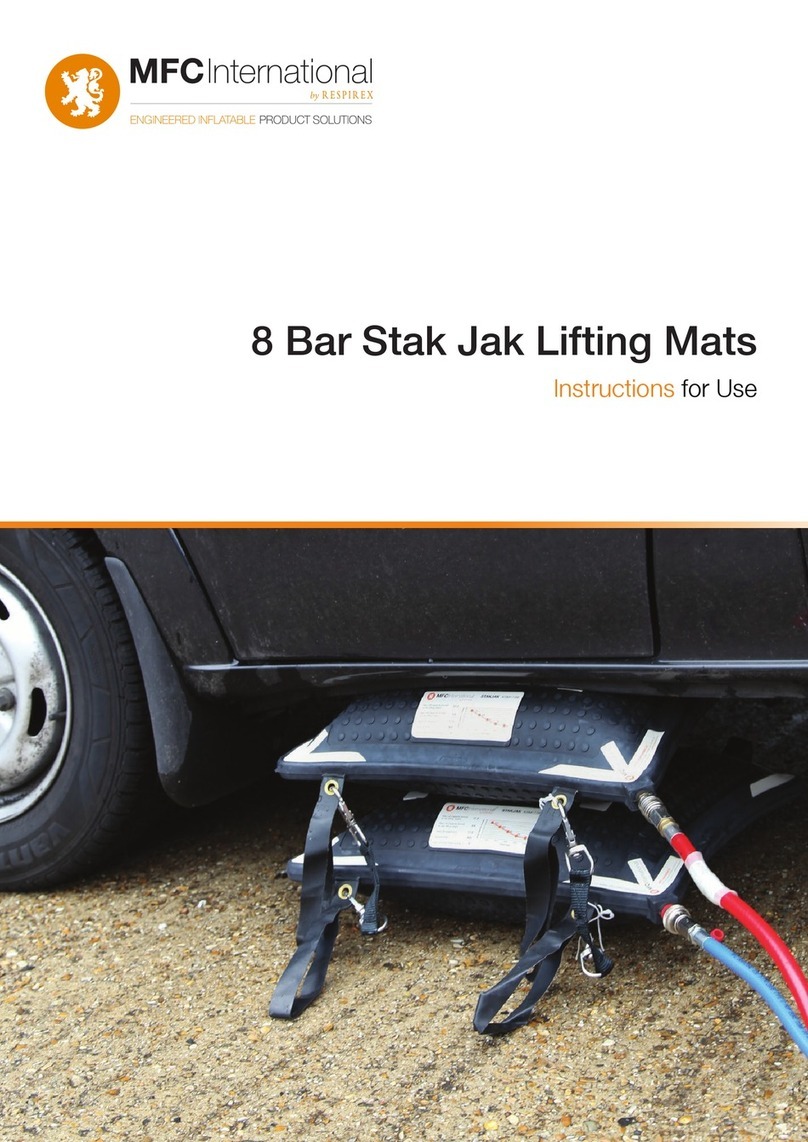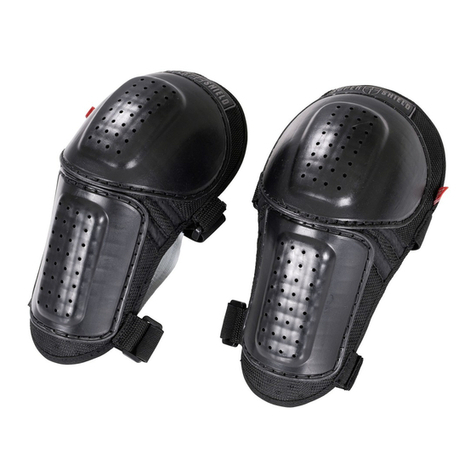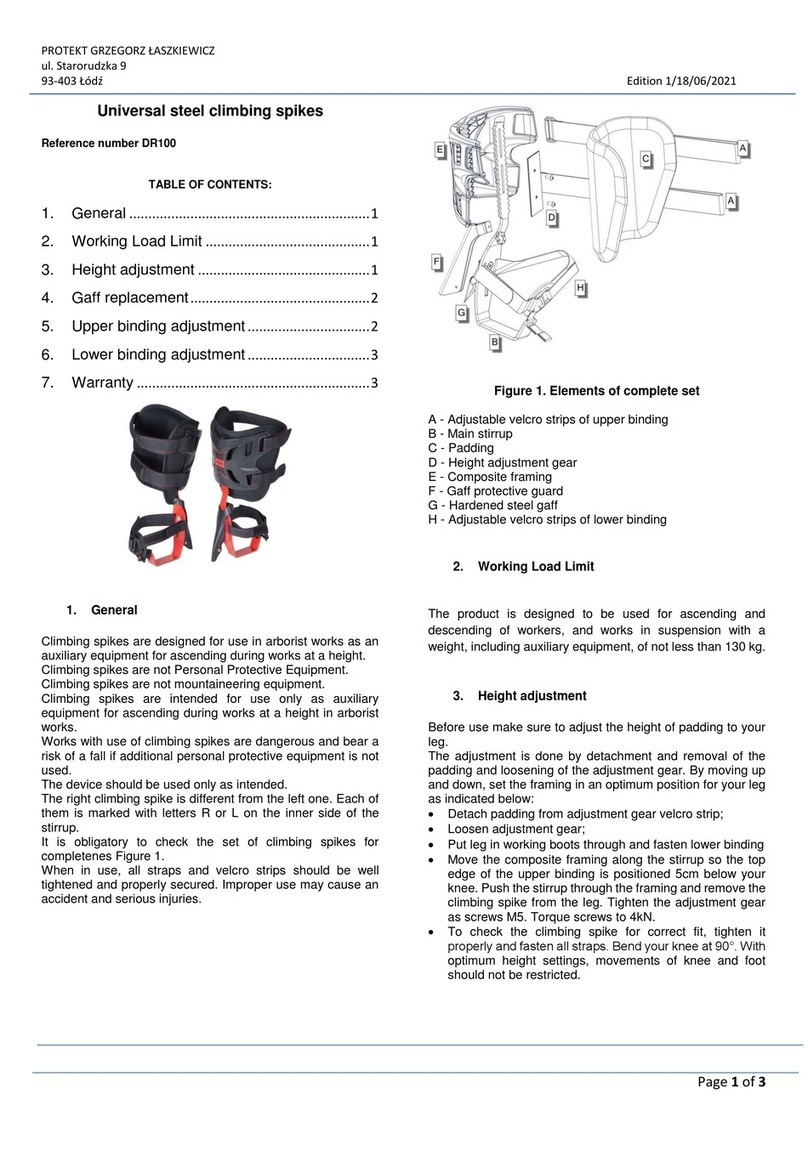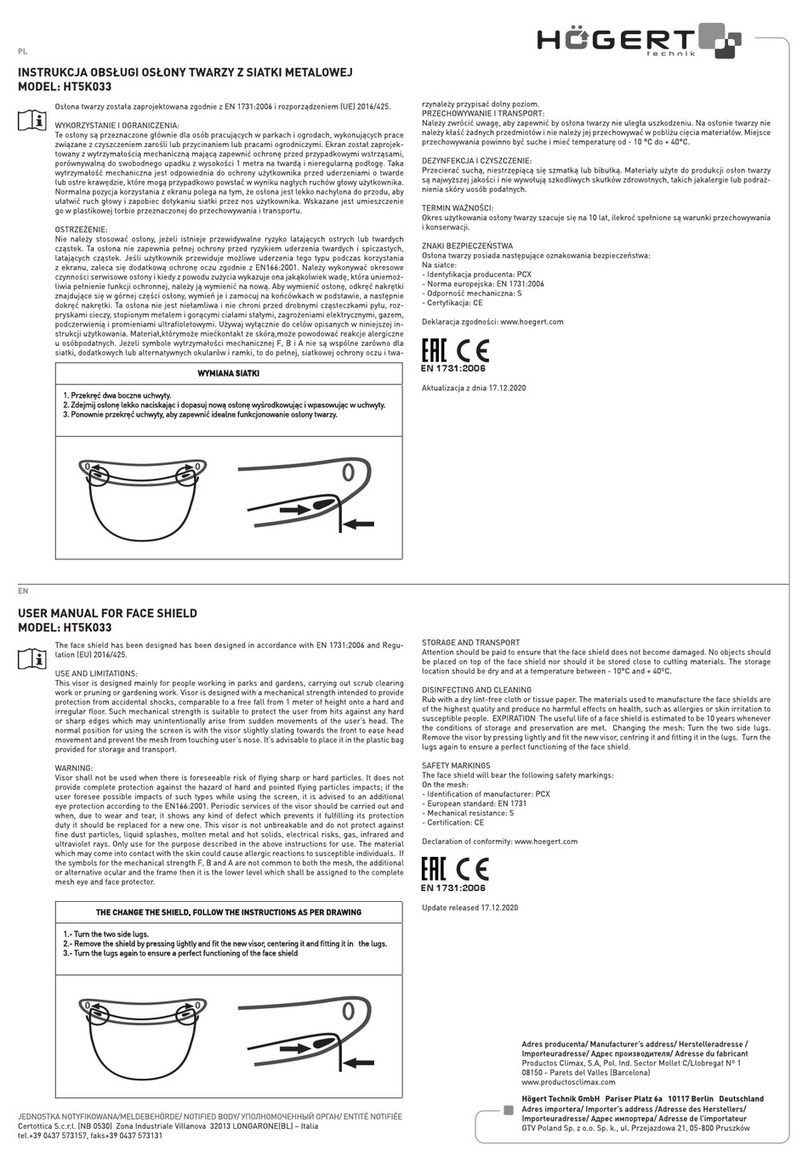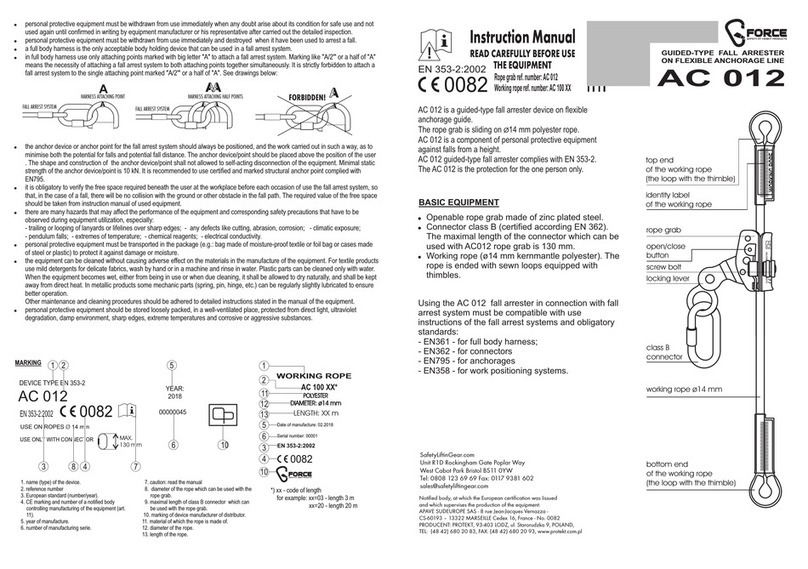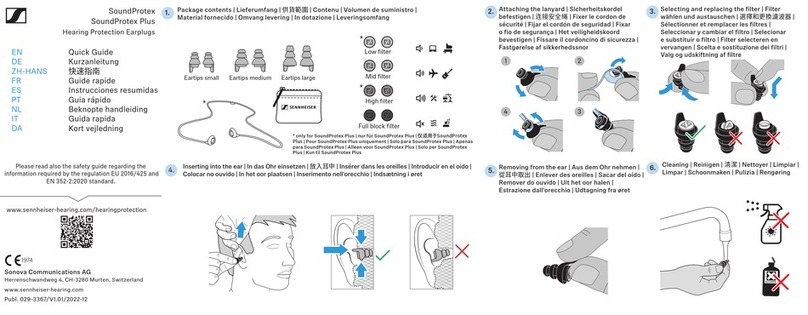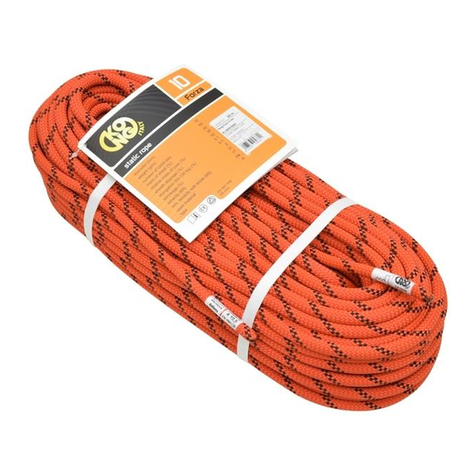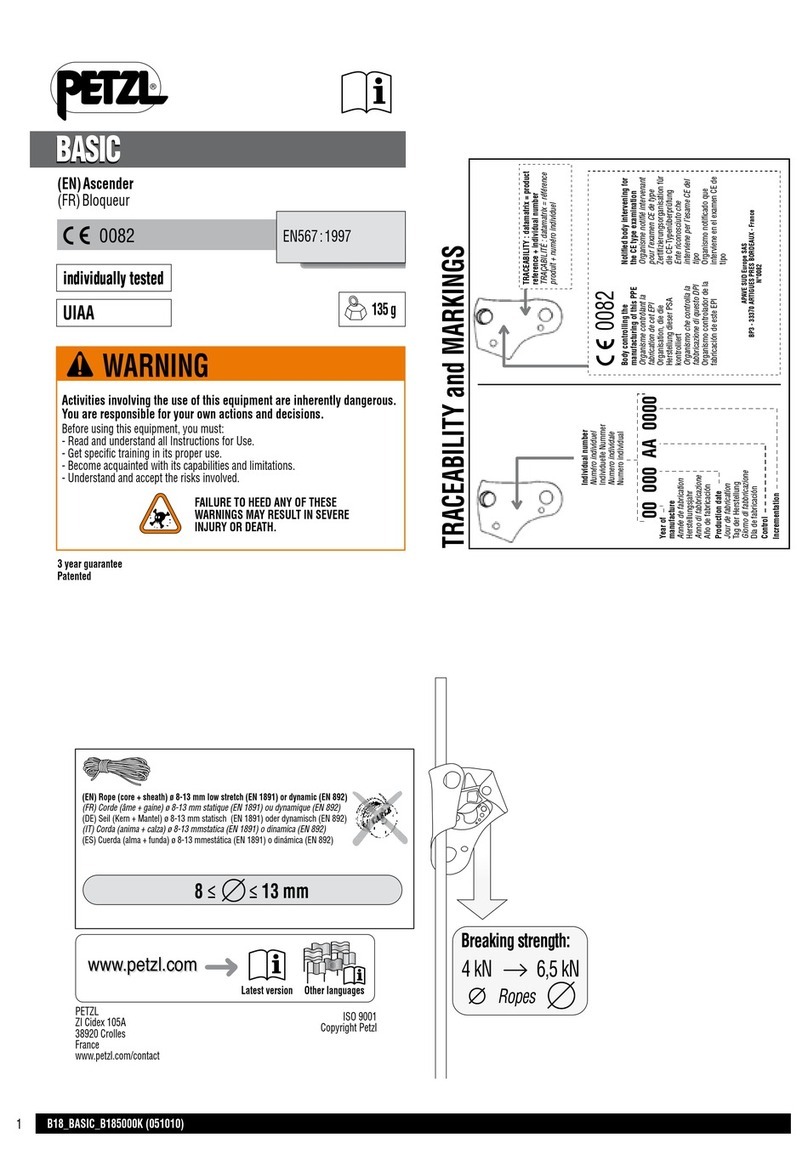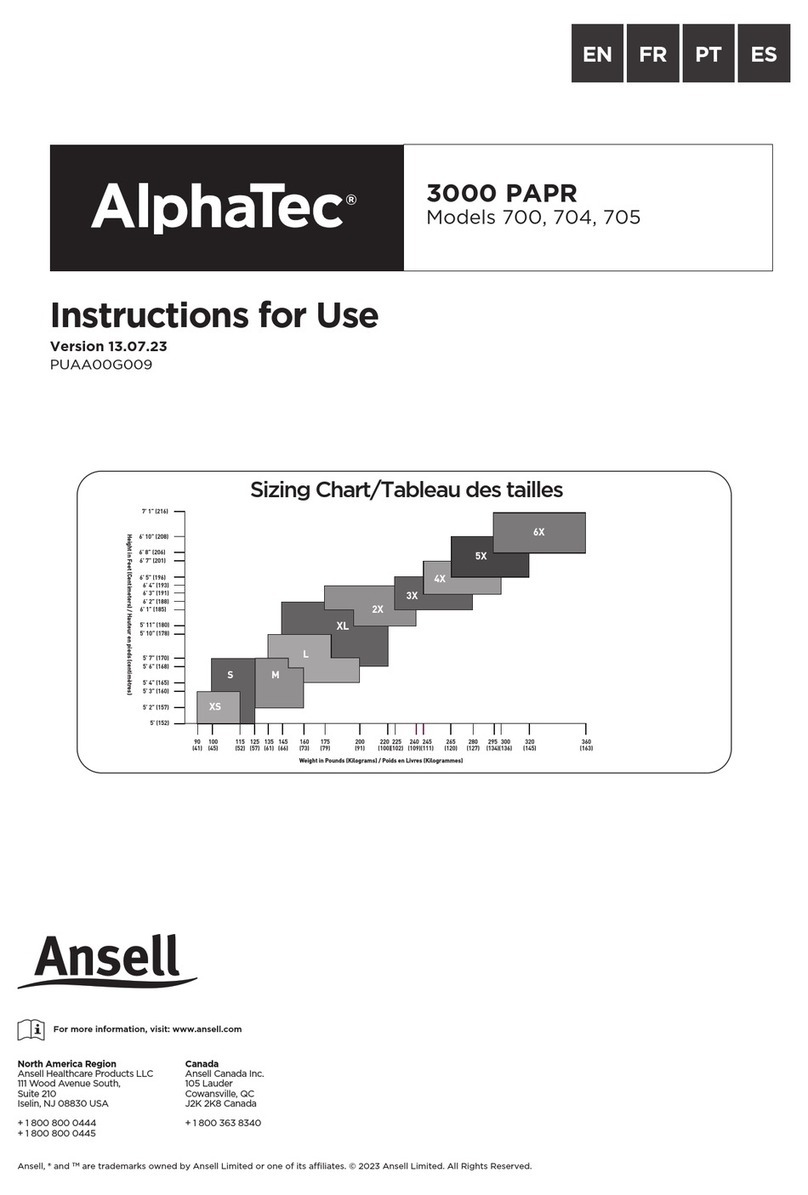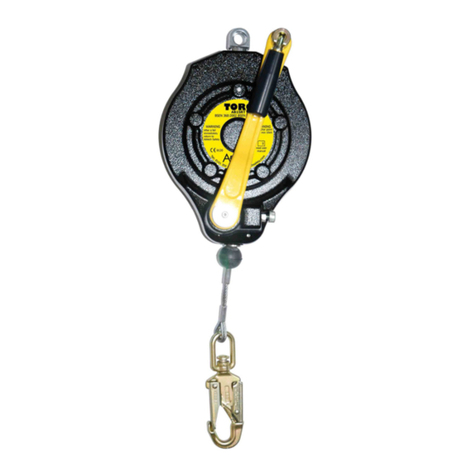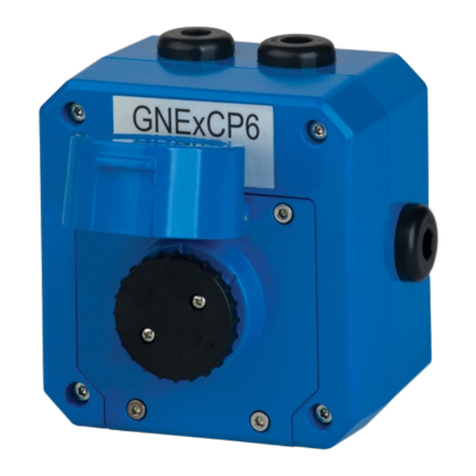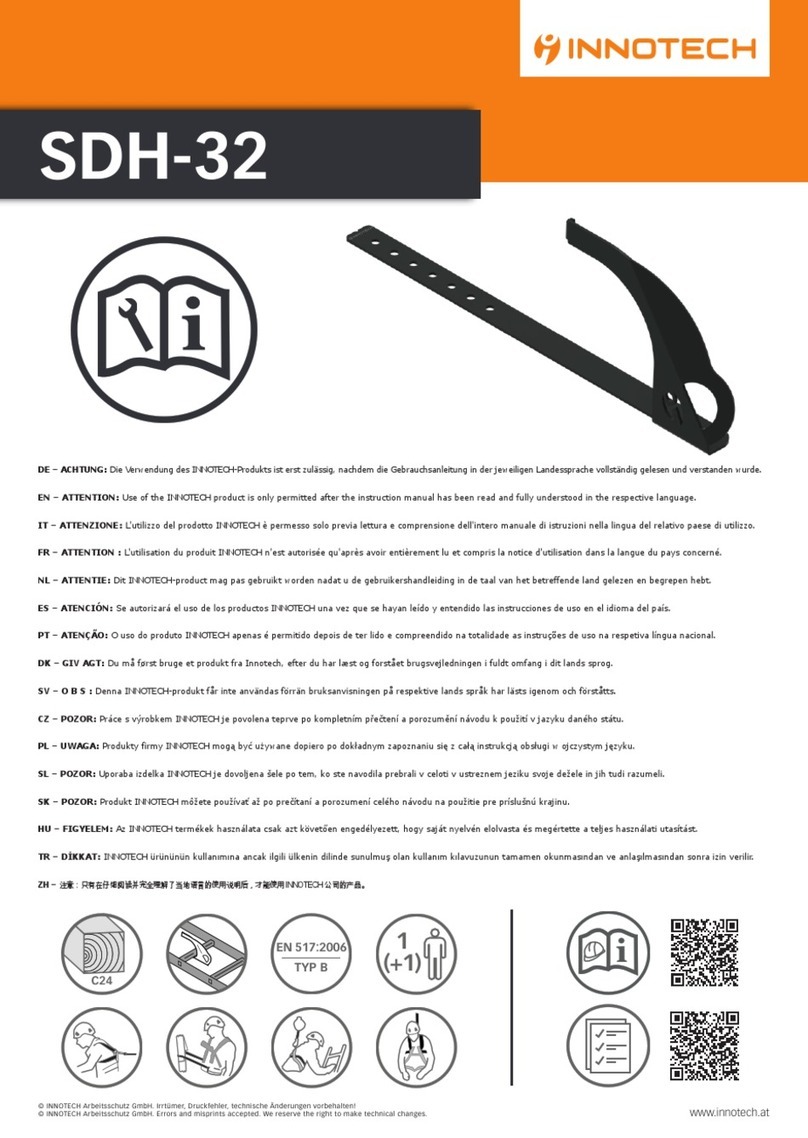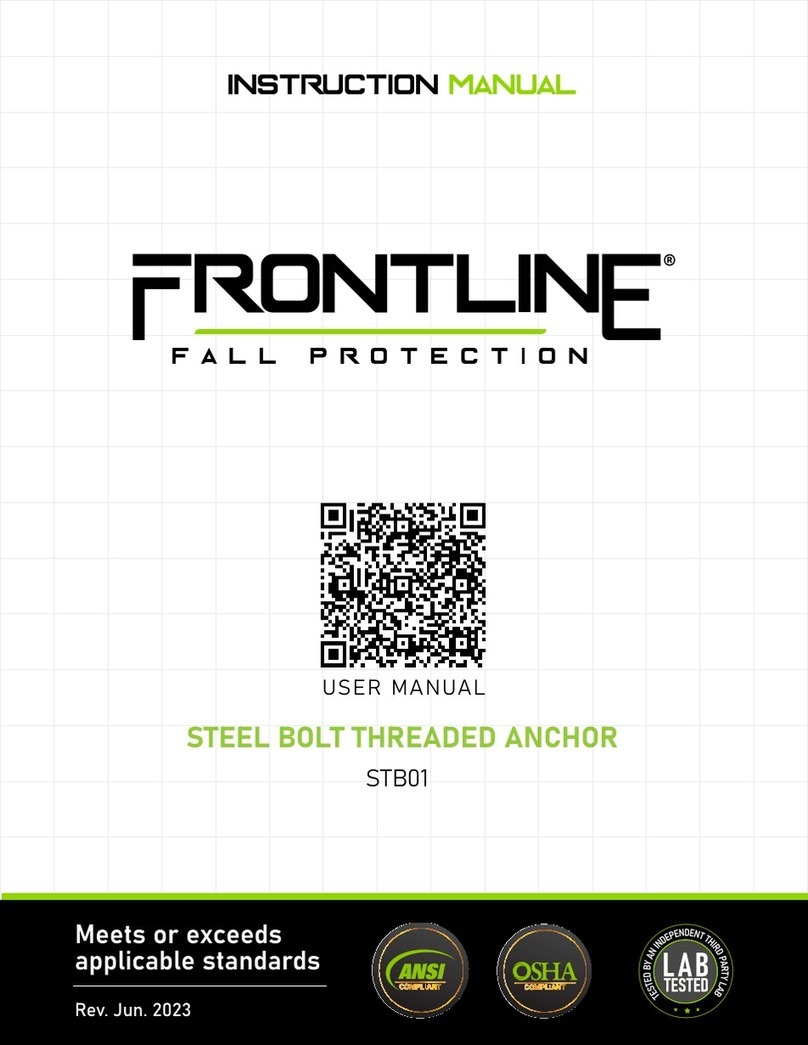CHARLY Vitesse Air Sports Helmet User manual

Air Sports Helmet

2,5-3,5 cm
Headband attachment / Kopfband-Befestigung
PUSH
Visor (available as accessory) / Visier (als Zubehör erhältlich)
NAMES OF PARTS
Helmet shell (dome)
Thread insert for visor
mounting
Ear padSize adjustment wheel
Temple strap
Neck strap
Strap divider
Chin strap buckle
Chin strap
Screws of the strap
system fastening
BEZEICHNUNG DER TEILE
Helmschale (Kalotte)
Gewindeeinsatz zur
Visierbefestigung
OhrpolsterKopfband-Regler
Schläfenriemen
Nackenriemen
Gabelspange
Kinnriemenschloss
Kinnriemen
Schrauben der Gurtband-
system-Befestigung

SCOPE OF APPLICATION
This quality air sports helmet, developed by Finsterwalder & Charly, has
been specially designed for hang gliding and paragliding in accordance
with CE EN966 (HPG: helmets for paragliding and hang gliding). It offers
maximum protection with an almost unlimited field of vision, minimum
weight and smallest dimensions.
However, it can never be the guarantee for the exclusion of injuries and
does not release the user from his personal responsibility for the risks
associated with the purpose of use.
INSTRUCTIONS FOR USE
Please read the following information before using the helmet for the first
time and keep the instructions for the period of use.
A) Size adjustment
The helmet can only develop its protective effect optimally if a tight fit on
the head is ensured in the event of a crash. A prerequisite for this is a
careful adjustment of the helmet.
1.) Choosing the right helmet size: The helmet shell (1) is available in
three different sizes. To select the right size, measure the maximum
head circumference around the middle of the forehead. Size S/M for
55-58, M/L for 58-62 and XL/XXL for 61-64 cm head circumference.
For XS, XXXL and specific head shapes, special inlays are available.
2.) Adjust the length of the chin-strap (2) as tightly as possible, as far
as it is comfortable, to ensure that the helmet is securely fastened
to the head.
3.) By turning the size adjustment wheel (3), the headband size can be
individually adjusted within the three helmet shell sizes. This allows the
helmet to be adjusted tightly and comfortably for both wide and long
head shapes. The range of rotation in clockwise direction (tighter)
and counterclockwise direction (wider) is limited by a perceptible
resistance. Do not turn the wheel forcibly to avoid destroying
the regulator. If necessary, the helmet lining and the headband
regulator are available as spare parts and can be easily replaced.
B) Positioning by adjusting the strap system
1.) Check the positioning of the helmet. The front edge of the helmet
should be two finger widths above the eyebrows. When looking up,
the edge of the helmet should be just visible at the outermost edge
of the field of vision. A correction of the factory positioning is only
necessary in exceptional cases.
2.) If a correction is necessary, remove the padding from the chin
strap (2), open the chin strap buckle (4) and loosen the straps
on the strap divider (5). By shortening the temple straps (6) and
lengthening the neck straps (7) on the right and left side of the
helmet, the helmet is positioned closer to the eyebrows. The position
of the strap divider (5) should remain at the edge of the ear pad (8).
Conversely, lengthening the temple strap and shortening the neck
strap causes the helmet to be positioned higher on the forehead.
C) Lining
The lining made of skin-friendly padding material is easily removable,
washable and available as a spare part. The size is indicated on the
sewn-in label. We only recommend hand washing with mild soapy water
and drying at room temperature. For disinfection, commercially available,
non-halogenated disinfectants (e.g. Sagrotan) can be used.
D) Ear pads
The padding lies outside the cup of the ear, so hearing is only slightly
limited. The ear pads (8) can be removed if necessary. Do this by
removing the two screws of the strap system fastening (9). The plastic
cover fixed with the two rivets remains mounted.
E) Visor/ski goggles
The visor, available as an accessory, protects the eyes from UV radiation
and drafts, and improves aerodynamics. It is screwed onto the threaded
inserts (10) integrated into the helmet shell. Please follow the assembly
and care instructions enclosed with the visor. Instead of the visor, you
can also use ski goggles. For this purpose, a retainer system is available
as an accessory, which holds the goggle strap in position.
F) Care, cleaning and storage
The helmet can be destroyed by improper handling:
•Contact with solvents, aggressive cleaning agents, paints and oils
•Temperatures above 50°C (storage in the car in blazing sun)
•Excessive pressure on the empty helmet (used as a seat)
•Contact with pointed or sharp objects
The modification or removal of original parts, or the use of foreign parts
can reduce the protective effect, endanger the wearer of the helmet and
lead to the invalidation of the approval and the manufacturer’s warranty.
•Operating temperature: -20°C to +35°C
•Store in a cool, dry place and protected from UV radiation
•Disposal not in household waste, but in municipal collection points
G) Safe use
The helmet shell and the strap system must be checked before each use.
Due to the construction, the energy absorption of the helmet is achieved
by the partial destruction of the shock absorbing foam. As a result of
a crash or violent impact, the protective effect of the helmet shell can
be significantly reduced. The helmet must thus be replaced. If in doubt,
contact us or your local dealer.
H) Durability
•Unused helmets under optimal storage conditions (cool, dry, protected
from UV radiation): 15 years
•Normal, careful use: 5 years from the time of initial use
•Very frequent use/operation under extreme conditions (e.g. contact
with sea water, frequent impacts/shocks): 2-3 years from the time of
initial use
English

ANWENDUNGSBEREICH
Dieser von Finsterwalder & Charly entwickelte Qualitäts-Flughelm ist
speziell für den Drachen- und Gleitschirmsport gemäß der CE EN966
(HPG: helmets for paragliding and hang gliding) entwickelt worden. Er
bietet bei fast uneingeschränktem Gesichtsfeld, minimalem Gewicht und
kleinsten Abmessungen maximalen Schutz.
Er kann jedoch niemals die Garantie für den Ausschluss von Verletzungen
sein und entbindet den Nutzer nicht von seiner persönlichen
Verantwortung für die mit dem Einsatzzweck verbundenen Risiken.
GEBRAUCHSANWEISUNG
Bitte lesen Sie diese Bedienungsanleitung vor dem ersten Gebrauch des
Helms und bewahren Sie sie für den Zeitraum der Benutzung auf.
A) Größenanpassung
Der Helm kann seine Schutzwirkung nur dann optimal entfalten, wenn
bei einem Sturz ein fester Sitz am Kopf sichergestellt ist. Voraussetzung
hierfür ist eine sorgfältige Anpassung des Helms.
1.) Auswahl der richtigen Helmgröße: Die Helmschale (1) ist in drei
Größen erhältlich. Zur Auswahl der richtigen Größe messen Sie den
maximalen Kopfumfang über die Mitte der Stirn. Größe S/M für 55-
58, M/L für 58-62 und XL/XXL für 61-64 cm Kopfumfang. Für XS,
XXXL und spezielle Kopfformen sind Sonder-Inlays erhältlich.
2.) Stellen Sie die Länge des Kinnriemens (2), soweit es der Komfort
erlaubt, möglichst eng ein, um einen festen Sitz des Helms am Kopf
zu gewährleisten.
3.) Durch Drehen des Kopfband-Reglers (3) wird der Umfang der
Helminnenausstattung innerhalb der drei Helmschalengrößen
individuell angepasst. Die feste und bequeme Anpassung des
Helms ist dadurch sowohl bei breiter wie auch länglicher Kopfform
möglich. Die Drehrichtung im Uhrzeigersinn (enger) und gegen
den Uhrzeigersinn (weiter) ist durch einen fühlbaren Widerstand
begrenzt. Vermeiden Sie gewaltsames Drehen, um den Regler nicht
zu beschädigen. Gegebenenfalls sind die Helminnenausstattung
sowie der Regler als Ersatzteile erhältlich und leicht austauschbar.
B) Positionierung durch Anpassung des Gurtbandsystems
1.) Prüfen Sie die Positionierung des Helms. Die Helmvorderkante soll
zwei Fingerbreit über den Augenbrauen sein. Beim Blick nach oben
soll der Helmrand am äußersten Rand des Blickfelds gerade noch
sichtbar sein. Eine Korrektur der werksseitigen Positionierung ist nur
in Ausnahmefällen erforderlich.
2.) Sofern eine Korrektur erforderlich ist, entfernen Sie das Polster
am Kinnriemen (2), öffnen Sie das Kinnriemenschloss (4) und
lockern Sie die Riemen an der Gabelspange (5). Durch Verkürzen
der Schläfenriemen (6) und Verlängern der Nackenriemen (7) auf
der rechten und linken Seite des Helms wird der Helm näher an
den Augenbrauen positioniert. Die Position der Gabelspange (5)
soll dabei am Rand des Ohrpolsters (8) verbleiben. Umgekehrt
bewirkt ein Verlängern des Schläfenriemens und ein Verkürzen des
Nackenriemens eine Positionierung des Helms höher an der Stirn.
C) Innenausstattung
Die Innenausstattung aus hautfreundlichem Polstermaterial ist leicht
abnehmbar, waschbar und als Ersatzteil erhältlich. Die Größe ist auf
dem eingenähten Typenschild vermerkt. Wir empfehlen ausschließlich
Handwäsche mit mildem Seifenwasser und die Trocknung bei
Zimmertemperatur. Zur Desinfektion können handelsübliche, nicht
halogene Desinfektionsmittel (z.B. Sagrotan) verwendet werden.
D) Ohrpolster
Die Polsterung liegt außerhalb der Ohrmuschel, weshalb die Hörfähigkeit
kaum eingeschränkt ist. Die Ohrpolster (8) können bei Bedarf
abgenommen werden. Lösen Sie hierfür die beiden Schrauben der
Gurtbandsystem-Befestigung (9). Die mit den zwei Nieten befestigte
Kunststoffabdeckung bleibt montiert.
E) Visier/Skibrille
Das als Zubehör lieferbare Visier schützt die Augen vor UV-Strahlung und
Zugluft,und verbessertdie Aerodynamik. Es wird anden inder Helmschale
eingelassenen Gewindeeinsätzen (10) angeschraubt. Bitte beachten
Sie die dem Visier beigelegten Montage- und Pflegehinweise. Anstelle
des Visiers kann auch eine Skibrille verwendet werden. Hierfür ist ein
Haltesystem als Zubehör erhältlich, das das Brillenband in Position hält.
F) Pflege, Reinigung und Aufbewahrung
Durch unsachgemäße Behandlung kann der Helm zerstört werden:
•Kontakt mit Lösungsmitteln, aggressiven Reinigern, Farben und Ölen
•Temperaturen über 50°C (Lagerung im Auto bei praller Sonne)
•Übermäßiger Druck auf den leeren Helm (z.B. Verwendung als
Sitzgelegenheit)
•Kontakt mit spitzen oder scharfen Gegenständen
Die Veränderung oder das Entfernen von Originalteilen, oder das
Anbringen von Fremdteilen kann die Schutzwirkung einschränken und
den Träger des Helms in Gefahr bringen, und führt zum Erlöschen der
Zulassung und der Herstellergarantie.
•Gebrauchstemperatur: -20°C bis +35°C
•Kühl, trocken und geschützt vor UV-Strahlung lagern
•Entsorgung nicht im Hausmüll, sondern in kommunalen Sammelstellen
G) Sicherer Gebrauch
Die Helmschale und das Befestigungssystem sind vor jedem Gebrauch zu
überprüfen. Konstruktionsbedingt wird die Energieabsorption des Helms
durch teilweiseZerstörungdes Dämpfungsschaumserreicht. Infolgeeines
Sturzes oder heftigen Aufpralls kann die Schutzwirkung der Helmschale
stark beeinträchtigt werden. Der Helm ist daher auszutauschen. Wenden
Sie sich im Zweifel an uns oder Ihren Fachhändler.
H) Haltbarkeit
•Ungenutzte Helme bei optimalen Lagerbedingungen (kühl, trocken,
geschützt vor UV-Strahlung): 15 Jahre
•Normaler, pfleglicher Gebrauch: 5 Jahre ab Inbetriebnahme
•Sehr häufiger Gebrauch/Gebrauch unter extremen Bedingungen
(z.B. Kontakt mit Meerwasser, häufige Schläge/Stöße): 2-3 Jahre ab
Inbetriebnahme
Deutsch

Finsterwalder GmbH - Charly Produkte
Pagodenburgstraße 8
81247 Munich, Germany
Phone: +49 89 8116528
E-Mail: office@finsterwalder-charly.de
Web: www.charly-produkte.de
Table of contents
Languages:
Other CHARLY Safety Equipment manuals



